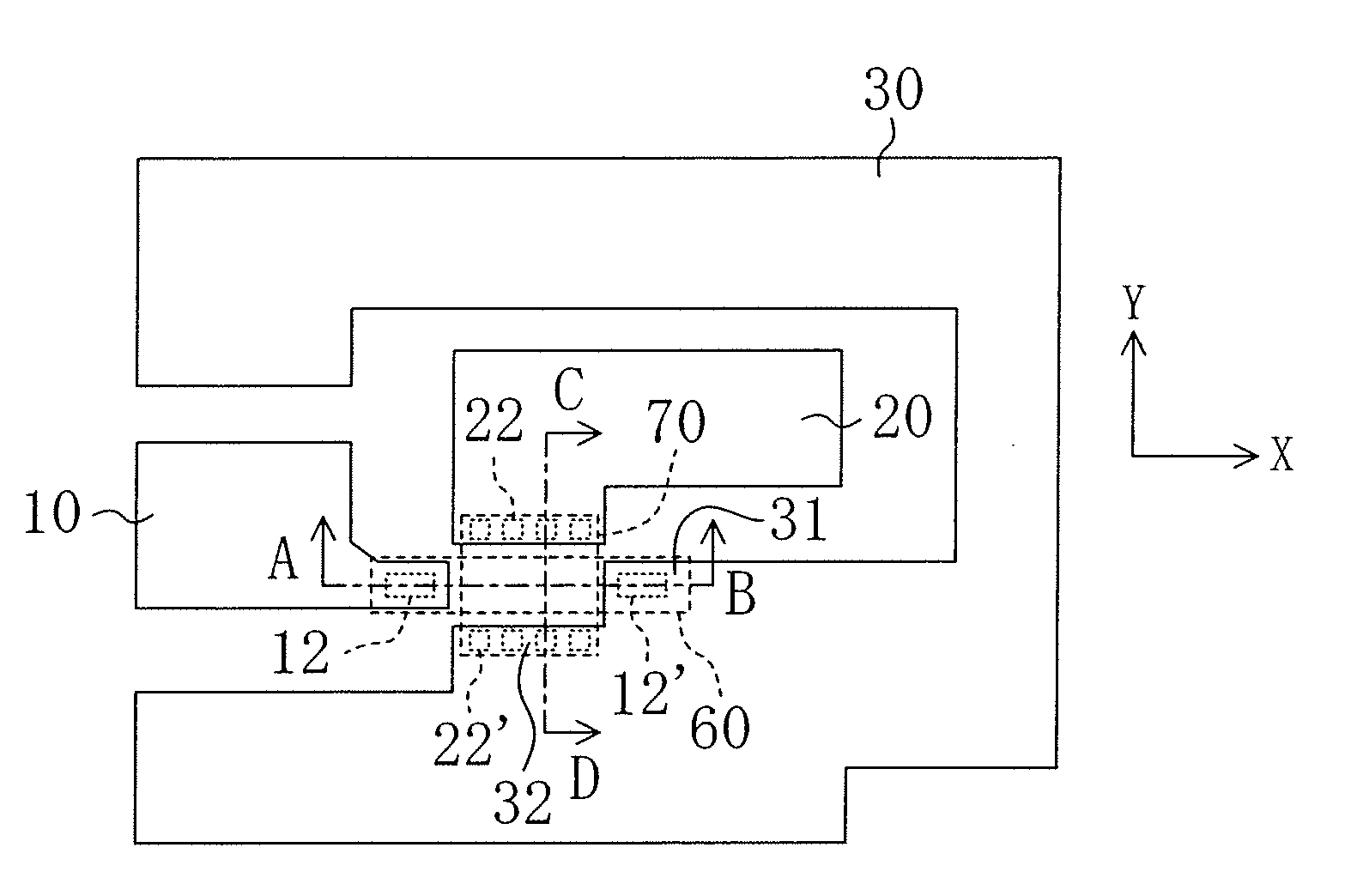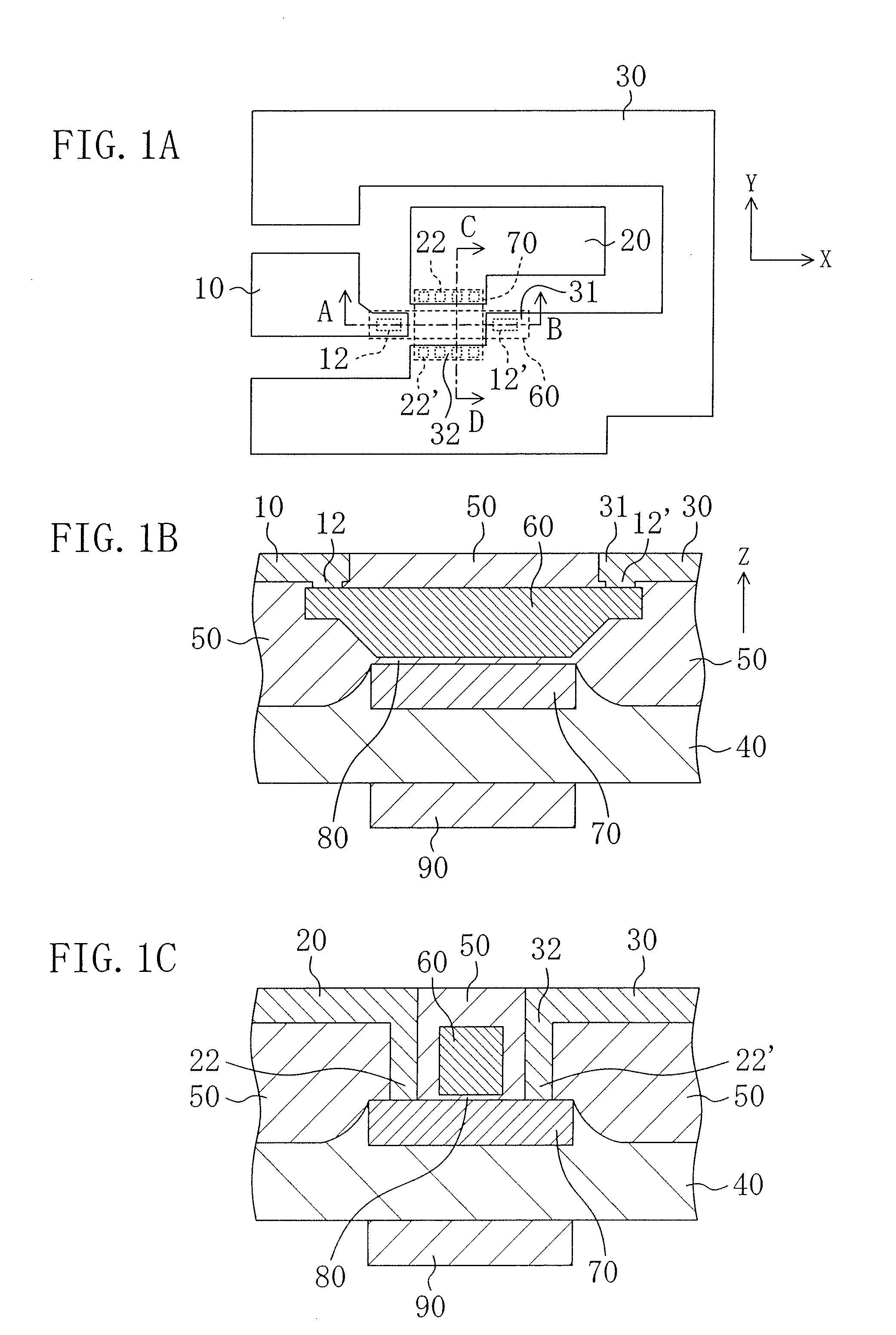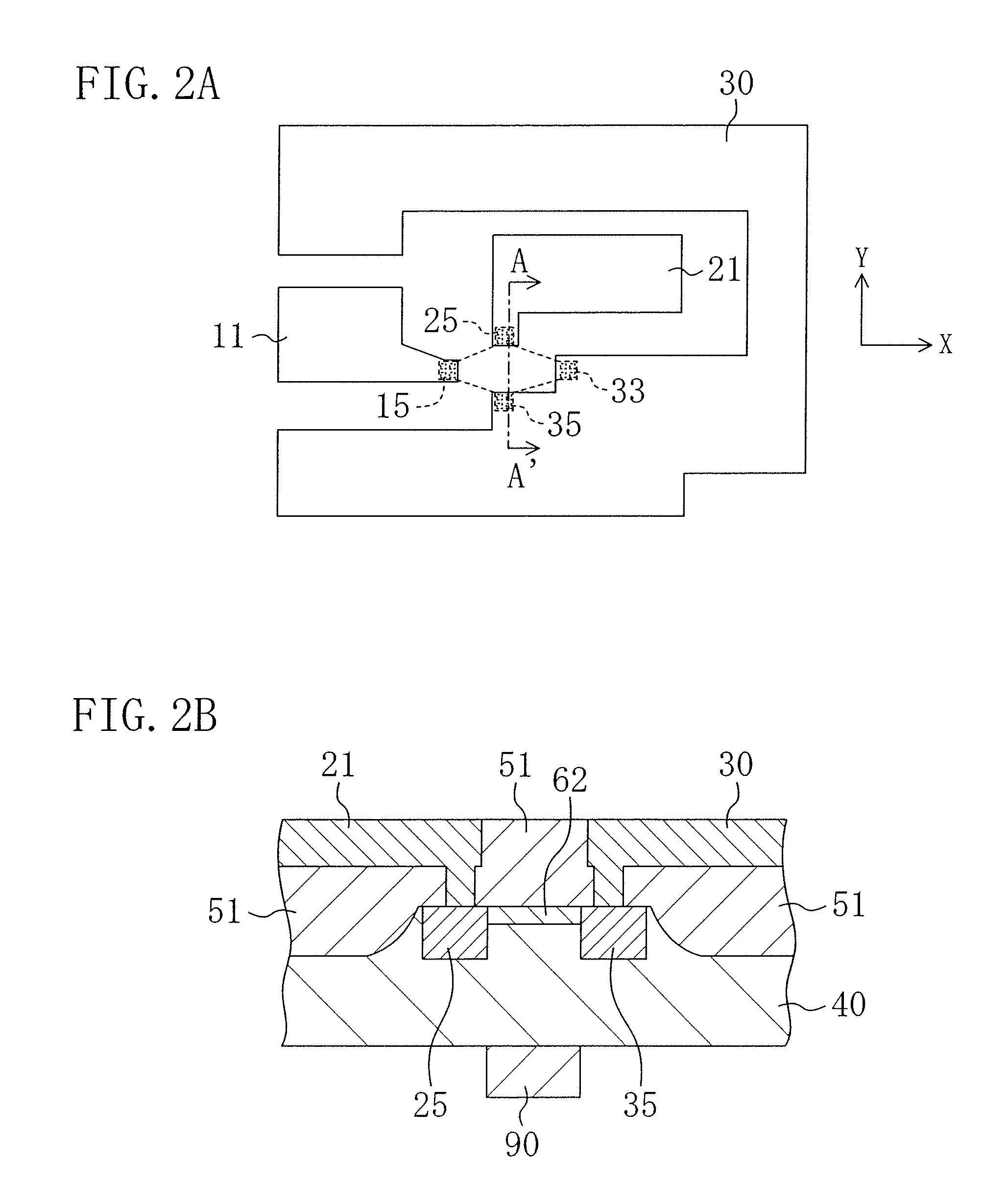Current amplifying element and current amplification method
a current amplification and current technology, applied in the direction of galvano-magnetic amplifiers, galvano-magnetic devices, semiconductor devices, etc., can solve the problems of output waveform distortion, inability to perform amplification, delay in input output, etc., and achieve high speed
- Summary
- Abstract
- Description
- Claims
- Application Information
AI Technical Summary
Benefits of technology
Problems solved by technology
Method used
Image
Examples
first embodiment
[0045]FIG. 1(a) is a schematic plan view of a current amplifying element according to a first embodiment, FIG. 1(b) is a schematic cross-sectional view taken along the line A-B in FIG. 1(a), and FIG. 1(c) is a schematic cross-sectional view taken along the line C-D in FIG. 1(a).
[0046]The current amplifying element of this embodiment is formed on a silicon substrate 40. In the cross-sectional views, i.e., in FIGS. 1(b) and 1(c), an input current path 60, which is made of polysilicon, is formed over an output current path 70, which is made of n+-type Si by doping, with an SiO2 insulator 80 interposed therebetween. A magnet 90 is bonded to the underside of the substrate 40. In the cross-sectional views, the magnet 90 has the north and south poles aligned in the vertical direction, and forms a magnetic field in the vertical direction (i.e., a direction Z) perpendicular to the output current path 70 and the input current path 60. The output current path 70 is a path (an area) where an ou...
example
[0056]The present inventors fabricated a current amplifying element having the same configuration as that shown in FIG. 1. The length (i.e., the distance between the input terminals) of the input current path 60 was 50 μm, and the length (i.e., the distance between the output terminals) of the output current path 70 was 0.1 μm. The thickness of the insulator 80 was 3.7 nm. A neodymium magnet having a magnetic flux density of 0.5 T was used as the magnet 90.
[0057]High frequency characteristics were evaluated by measuring the S parameters of the current amplifying element and then calculating from the S parameters an H21 component of the H parameters to obtain a current gain. The current gain is obtained as the magnitude |H21| of the H21 component. The input and output DC biases applied when the S parameters were measured were both 2V.
[0058]FIG. 3 shows the frequency characteristics of a current gain obtained by subtracting a current gain when no magnetic field was applied from a curr...
second embodiment
[0071]FIG. 2(a) is a schematic plan view of a current amplifying element according to a second embodiment, and FIG. 2(b) is a schematic cross-sectional view taken along the line A-A′ in FIG. 2(a).
[0072]The current amplifying element of this embodiment is formed on a silicon substrate 40, and an input current path and an output current path 62 are made of Si doped with an impurity. Unlike in the first embodiment, the input current path and the output current path 62 are not separated by an insulator, and parts of these current paths occupy the same part in the current amplifying element. Specifically, the input current path that connects two input terminals 15 and 33 (one of them is a part of a ground wire 30) and the output current path 62 that connects two output terminals 25 and 35 (one of them is a part of the ground wire 30) occupy the same area in the part shown in FIG. 2(b).
[0073]An input wire 11 made of Al is directly connected with the input current path at the input termina...
PUM
 Login to View More
Login to View More Abstract
Description
Claims
Application Information
 Login to View More
Login to View More - R&D
- Intellectual Property
- Life Sciences
- Materials
- Tech Scout
- Unparalleled Data Quality
- Higher Quality Content
- 60% Fewer Hallucinations
Browse by: Latest US Patents, China's latest patents, Technical Efficacy Thesaurus, Application Domain, Technology Topic, Popular Technical Reports.
© 2025 PatSnap. All rights reserved.Legal|Privacy policy|Modern Slavery Act Transparency Statement|Sitemap|About US| Contact US: help@patsnap.com



